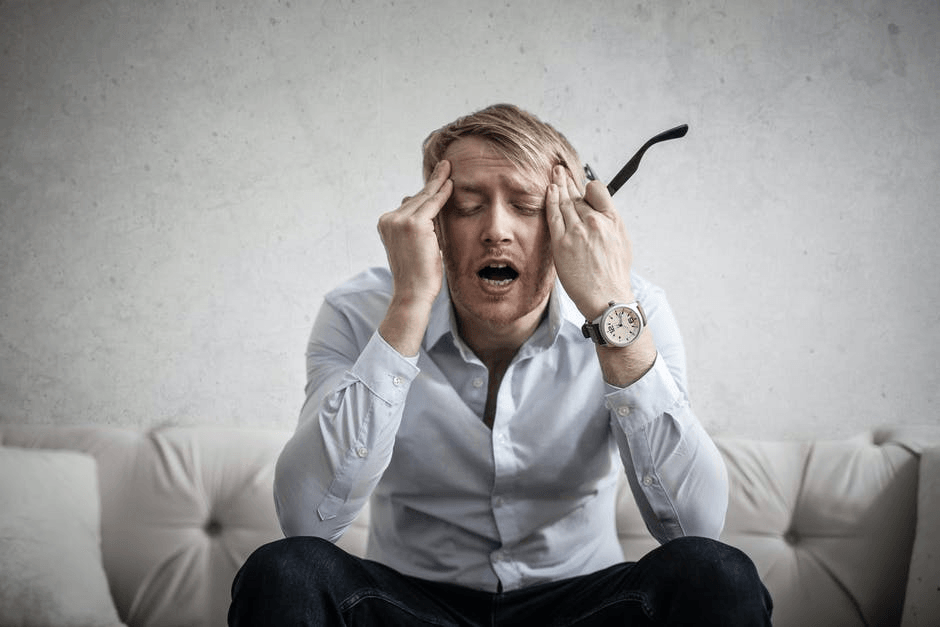Anxiety
Anxiety
We all experience varying degrees of stress throughout our lives as we work through the challenges that come our way. For some of us, stress may trigger anxiety, an emotion characterized by feelings of tension and apprehension, worried thoughts, and a fear of what’s to come, or what we believe might happen, in the near or distant future. Anxiety may also manifest physically with symptoms like fatigue, lack of concentration, irritability, digestive distress, and muscle aches or tension.
While the experience of mild anxiety in response to a stressful situation such as deadlines, arguments, or illness, is common, anxiety that is overwhelming, prolonged, and prominent in daily life may be indicative of an anxiety disorder. Under these circumstances, anxiety often interferes with everyday activities and functioning, and is pervasive across one’s personal, familial, social, and occupational settings.
Anxiety disorders are frequently demonstrated by changes in thoughts, feelings, and behaviours, which may be noticeable to ourselves and others. We may find ourselves excessively worrying about “what ifs” and find it difficult to control these thoughts. Additionally, anxiety may also result in or contribute to changes in eating and sleeping behaviours, which can further amplify anxiety symptoms.
Anxiety in Children
Anxiety is one of the most common concerns for children, but can present differently from how it is seen in adults. It is not unusual for children to feel anxious, but how can we know when this anxiety becomes a problem?
Some physical signs that you might see in your child are things like not using the bathroom at school, frequent headaches or stomach aches, restlessness, hyperactivity, shaking in intimidating situations, muscle tension, or difficulty sleeping.
Emotionally, children struggling with anxiety may cry a lot or be very sensitive, be easily angered, experience panic attacks, worry about their future, worry when leaving a parent, or have frequent nightmares about losing a parent.
Behaviourally, children with anxiety may constantly ask “what if” questions, avoid class activities, refuse to go to school, avoid social situations, or have tantrums. Common childhood anxiety disorders include
separation anxiety ,
selective mutism , and
social anxiety .
How is anxiety treated?
A common form of treatment for anxiety disorders is psychotherapy, in which the patient and therapist work together to identify anxiety triggers and explore and challenge maladaptive thoughts and behaviours. Some widely used treatment approaches include cognitive behavioural therapy (CBT) and exposure therapy , which seek to modify maladaptive thoughts patterns and confront triggers to reduce anxiety in the long term.
If you've experienced any of the above symptoms, you may be suffering from anxiety.
Contact us for a free 15 minute consultation to see how we can help.
What is worry?
We all worry about many things in our lives from time to time. Worry can be simply defined as thoughts about negative events that may or may not happen in the future and often include a “what if” question. However, worry can become a problem when it happens every day or when it becomes excessive or uncontrollable. With worry, we can feel uneasy or concerned about a situation. With excessive worry, our mind and body can go into overdrive trying to focus on what might or might not happen.
Worry vs. Anxiety
Worry can be seen as the cognitive or thinking part of
anxiety, as worry tends to be repetitive or obsessive thoughts about a problem or situation. We experience worry in our heads, whereas we often feel anxiety physically in our bodies. Additionally, worry tends to lead us to problem solving while anxiety can prevent us from being able to solve problems. Lastly, worry tends to be mild and controllable whereas anxiety can be difficult to control and create emotional distress.

How is worry treated?
If you feel as though your worries are out of control, excessive, or impacting your daily life, you may need treatment.
Cognitive behavioural therapy (CBT) has been found to be an effective form of psychotherapy for individuals dealing with worry as it can help to challenge thoughts related to worry and teach ways to help cope with worry.
Generalized Anxiety Disorder
We all worry about different things like school, finances, or relationships from time to time. However, Generalized Anxiety Disorder (GAD) is different from normal anxious feelings. An individual with GAD may worry about a variety of things excessively and uncontrollably, even if there is no reason to worry.
Some common signs of GAD are:
- Difficulty controlling worry
- Difficulty making decisions, or fear of making wrong decisions
- Difficulty with concentration
- Feeling restless or on edge, trouble relaxing
This excessive anxiety is impacting daily functioning
Individuals with GAD can also experience physical symptoms like restlessness, fatigue, sweating, difficulty concentrating, nausea, digestive problems, irritability, muscle tension, or difficulty with sleep.
Generalized Anxiety Disorder in Children
Children with GAD worry excessively about a variety of things like school, grades, family, relationships with peers, or performance in sports. This can cause children to experience the above symptoms just as adults do, although children often present with increased physical symptoms when dealing with
anxiety.
Additionally, children with GAD tend to be very hard on themselves and strive for perfection, which can cause a need to seek reassurance or approval from others.
How is Generalized Anxiety Disorder treated?
One of the anxiety treatment options is a psychotherapy approach called cognitive behavioural therapy (CBT). CBT has been shown to help individuals with GAD change their thinking patterns by recognizing and controlling anxious thoughts. Additionally, CBT can help individuals learn different ways to cope with anxious thoughts and feelings when they do arise.
If you are experiencing any of the symptoms above, you may be suffering from generalized anxiety or another anxiety disorder. Contact us for a free 15 minute phone consultation to discuss the anxiety treatment options.
Health Anxiety
Illness Anxiety Disorder
Illness anxiety disorder (previously called hypochondriasis) is characterized by obsessive, irrational, and uncontrollable worry about having a serious medical condition. Naturally occurring sensations are often misinterpreted as evidence for illness, resulting in the individual being easily distressed about their health. These distorted thoughts typically lead to excessive checking behaviours and persistent questioning to ensure that they are not sick.
Alternatively, the individual with health anxiety may avoid medical attention due to fear of what may be discovered. Even if the individual does have an illness, the degree of worry and related checking behaviors are more extreme and time consuming than would be expected.
This mental health condition can not only be physically and mentally draining, but can also negatively impact the quality of life of the individuals and their relationships.
Common signs or symptoms of illness anxiety disorder include:
- Avoiding places or activities for fear that help may be hard to find
- Avoiding places or activities for fear that help may be hard to find
- Excessive body checking
- Reassurance seeking
- Researching illnesses and treatments frequently
- Excessive missed days of work or school
- Frequent trips to medical professionals
- Inability to participate in activities due to trying to prevent exposure to perceived germs or illnesses
- Decline in quality of life (reduced involvement in activities, poor relationships, limited interests, preoccupied with worry)
- Being preoccupied with having or getting a serious disease or health condition
Somatic Symptom Disorder
Alternatively, Somatic Symptom Disorder is a type of health anxiety in which a person has a significant focus on actual physical symptoms they are experiencing, which causes major emotional distress and impacts functioning. Individuals with Somatic Symptom Disorder may have a diagnosed medical condition, but the reaction to the symptoms is out of proportion to what would be seen as a normal reaction. A person is not diagnosed with somatic symptom disorder solely because a cause cannot be identified for a symptom, but the emphasis is on the extent to which thoughts, feelings, and behaviours related to the illness are out of proportion to the symptom.
Symptoms of Somatic Symptom Disorder can include:
- Experiencing specific sensations (e.g. pain, shortness of breath, fatigue, or weakness) for more than six months
- Constant worries about potential illness
- Feeling that medical evaluation or treatment has not been adequate
- Fearing that symptoms are serious, even when there is no evidence
- Having a more severe impairment than is usually expected from a medical condition
How is health anxiety (Illness Anxiety Disorder and Somatic Symptom Disorder) treated?
The most common treatment for health anxiety is psychotherapy, particularly cognitive behavioral therapy (CBT). CBT has been found to be effective in treating health anxiety as it can help identify beliefs around health, change unhelpful thoughts, help find different ways to respond to bodily sensations, teach ways to cope with anxiety, and help to reduce body focused behaviours.
If you think you may be suffering from Illness Anxiety Disorder or Somatic Symptom Disorder, contact us for a free 15 minute phone consultation to see how we can help!
Performance Anxiety
Performance anxiety (also called ‘stage fright’) can be defined as having fear about your ability to perform a specific task. Individuals experiencing performance anxiety may worry about a task before it's begun or believe failure will result in humiliation or embarrassment. An individual can experience anxiety around a variety of situations including competing in a sporting event, taking a test, doing something while others are watching, singing, or acting. Performance anxiety can vary from person to person from mild nervousness to the thought of performance causing a panic attack. Although it is not a psychological disorder, performance anxiety can not only negatively affect self-esteem and confidence, but also prevent an individual from participating in activities.
Common symptoms of performance anxiety include:
- Excessive sweating, heart palpitations, chills, high blood pressure, or rapid breathing.
- Nausea, shaking, or feeling like there's a “knot” in your stomach .
- Dry mouth or throat.
- Backing out of a performance or making errors during a performance .
Social Anxiety vs. Shyness
One of the methods that professionals use to treat performance anxiety is cognitive behavioural therapy (CBT). CBT can help individuals understand their reactions to anxiety and provide helpful ways to gain control over these situations. Additionally, mindfulness strategies can help individuals relax and redirect their thoughts when anticipating a performance.
If you experience performance anxiety, consider contacting us for a free 15 minute phone consultation to see how we can help.
Social Anxiety
Social Anxiety Disorder, also sometimes called Social Phobia, can be described as a fear of social interactions and situations, where one might possibly be judged or evaluated by others. Individuals with social anxiety disorder tend to feel nervous or uncomfortable when around others. These situations can fall into two categories: performance situations like meetings, presentations, eating in front of others, or public speaking, or interpersonal interactions such as meeting new people, talking to friends, dating, or going to social events.
Social Anxiety in Children
Social Anxiety Disorder can commonly present in children as social relationships are very important in a child’s life. Children with social anxiety are often worried that others will think badly of them, which can lead to distress and avoidance. Thus, social anxiety can begin to negatively impact school performance, attendance, and the ability to socialize with peers.
Symptoms of Social Anxiety Disorder
Some common symptoms of social anxiety disorder include:
- Fear of situations in which you might be judged
- Fear of embarrassment or humiliation
- Fear of people noticing discomfort or anxiety (e.g. blushing)
- when thinking about future social situations
- Analyzing interactions with others for mistakes
- Feeling panicked prior to social interactions
- Attempting to avoid social situations
- Experiencing anxiety
- Distress when unable to avoid situations
It is normal for all of us to feel somewhat anxious in social situations from time to time. However, social anxiety can become a problem when it is too intense, happens too open, and begins to affect your ability to function. When we begin to avoid social situations, it can also affect our personal relationships and possibly lead to low self-esteem, depression, sensitivity to criticism, and poor social skills. Individuals with social anxiety disorder can also experience physical symptoms like an increased heart rate, nausea, or sweating during social situations. In some cases, some individuals can experience panic attacks when in social situations.
How is Social Anxiety Disorder treated?
A therapeutic intervention known as Cognitive Behavioural Therapy (CBT) has been shown to be successful at helping individuals with Social Anxiety Disorder. CBT has been shown to help individuals alleviate anxiety symptoms, learn how to cope with social situations, practice social skills, and replace negative thoughts. Additionally, Exposure Therapy has been found to help individuals face feared social situations in a controlled space to help decreased anxiety and reduce avoidance.
If you’re experiencing symptoms of social anxiety, consider contacting us for a free 15 minute phone consultation to discuss how we can help.
Separation Anxiety
Many toddlers and young children experience anxiety when separated from a primary caregiver until about age three or four. However, some older children experience Separation Anxiety Disorder, an excessive anxiety or fear when away from home or separated from caregivers. This anxiety can interfere with and limit a child's life by causing them to be isolated from peers, miss opportunities to engage in activities, or cause them to do badly in school.
Some symptoms of separation anxiety include:
- School refusal and missing many days of school
- Clinging to a parent
- Refusing to attend school field trips, play dates, sleepovers, or other events.
- Trouble falling asleep or trouble sleeping alone.
- Frequent worries about bad things happening to caregivers or loss of caregiver.
- Inability to make and maintain friendships due to fear of being away from parents.
- Frequent complaints of headaches, stomach aches or other physical symptoms when separation from a parent is anticipated
- Recurrent distress when anticipating or experiencing separation
- Nightmares about separation
- Symptoms have been occurring for at least four weeks
Separation Anxiety in Adults
Although separation anxiety frequently occurs in children and teens, it can also occur in adults. Separation anxiety occurs in adults when they experience excessive fear when separated from those with whom they are attached, which could be a family member, a spouse, or a roommate. As a result, when separated an adult may experience anxiety, nightmares, and an inability to go to work or leave their home. Although this is more common in young adults leaving home, it can also be prompted in older adults by children leaving home, a spouses’ death, or family moving away. Separation anxiety in adults can lead to significant disturbances in functioning including work attendance, isolation, or difficulty in romantic relationships.
How is Separation Anxiety treated?
Several types of talk therapy or psychotherapy have been found to be helpful for both children and adults suffering from separation anxiety disorder. Cognitive behavioural therapy (CBT) can help children learn how to better cope with anxiety, recognize anxious feelings, and address thought patterns that contribute to anxiety. For very young children play therapy can be effective as play can be used to process emotions and learn coping skills. Additionally, exposure therapy can help to reduce anxiety over time by gradually exposing children or adults to situations in which they are separated from their parents or attachments. Mindfulness can be helpful to help both children and adults learn to self-soothe during anxious times when separated from caregivers or attachments. Lastly, for children dealing with separation anxiety, parents play a vital role in treatment. Using family therapy, parents can learn strategies to help their child and effective ways to respond to anxiety.
If you or your child are suffering from any of the above symptoms, you may be suffering from separation anxiety disorder. Contact us for a free 15 minute phone consultation to discuss what type of treatment may be right for you.
Anxiety FAQs
How do I know if my anxiety is something that needs professional help?
It is normal to feel anxious from time to time, such as before a significant life event, regarding stressors like finances, work, or school, or due to significant life changes. However, if worry or fear interferes with your daily life, relationships, or sleep, it may be time to seek help. Signs that you may need to seek help include consistent overthinking, physical symptoms of anxiety, and avoiding situations due to fear. Working with a therapist can help you understand the sources and causes of your anxiety and support you in developing strategies to manage it better.
What’s the difference between everyday stress and an anxiety disorder?
Stress typically occurs in response to a specific situation and dissipates once the stressor or challenge is resolved. Anxiety disorders, on the other hand, involve ongoing and excessive worry, even when there is no apparent reason to feel anxious. If your worry feels constant and difficult to control, it may be more than stress.
How long does it take to feel better after starting anxiety treatment?
Many individuals begin to notice improvements in their anxiety within a few weeks of beginning therapy, especially as they learn more about their anxiety through evidence-based approaches like Cognitive Behavioural Therapy (CBT). However, timelines for progress are unique to each person and each situation. Some individuals may feel better quickly, while others may need longer-term support.



